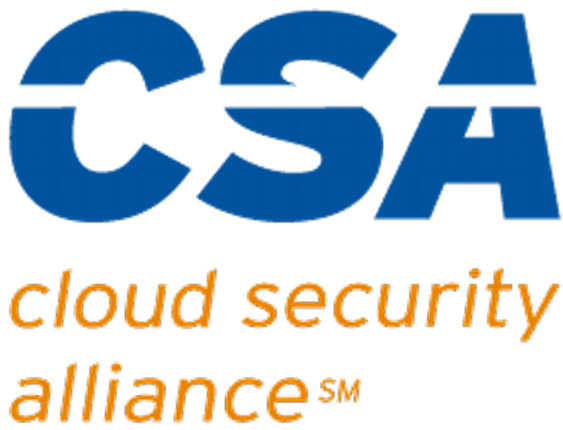Picture this: Your marketing coordinator uploads client files to her personal Dropbox because it’s faster than the company server. Your sales team uses WhatsApp to share leads because it’s more convenient than your CRM. Your accountant installs a “helpful” browser extension to manage expenses more efficiently.

Sound familiar? Welcome to the world of Shadow IT, the unauthorized technology that’s quietly infiltrating small and medium businesses everywhere.
What Exactly Is Shadow IT?
Shadow IT refers to any hardware, software, or cloud application that employees use without the knowledge or approval of your IT team. In smaller businesses, this may seem harmless or resourceful. After all, when you don’t have a large IT department, employees often become creative problem-solvers.
But here’s the reality: according to Cisco research, 80% of employees use unauthorized technology at work. That means four out of five of your team members are likely using tools that exist completely outside your security and oversight.
Why Smart Employees Make Risky Choices
Before we dive into the risks, it’s essential to understand why employees turn to shadow IT in the first place. It’s rarely about rebellion or carelessness; it’s usually about getting work done more effectively.
The Speed Factor: Approved software often comes with lengthy procurement processes. When your graphic designer needs a tool to meet a client deadline, waiting three weeks for IT approval isn’t realistic.
The Frustration Factor: Sometimes company-approved tools are clunky, outdated, or missing features that newer alternatives offer. Your team wants to do great work, and they’ll find tools that help them succeed.
The Remote Work Reality: As teams became distributed, employees started using personal devices and accounts to maintain productivity. What began as a temporary solution often becomes a permanent habit.
The Knowledge Gap: Many employees don’t understand the security implications of their choices. That innocent-looking productivity app might be harvesting company data.
The Hidden Risks Threatening Your Business
While shadow IT often stems from good intentions, it creates serious vulnerabilities that can devastate small businesses.
Data Breach Exposure
The average data breach now costs organizations over $4.88 million, but for small businesses, even a minor breach can be existentially threatening. When employees use unauthorized cloud storage, messaging apps, or productivity tools, your sensitive data ends up in systems you don’t control or monitor.
Consider what happens when an employee stores client information in their personal Google Drive, then leaves the company without transferring access. Your business data is now in someone else’s personal account, potentially forever.
Expanded Attack Surface
Every unauthorized app or device creates a new entry point for cybercriminals. These tools are not protected by your security measures, endpoint security, monitoring systems, or access controls.
Hackers specifically target shadow IT because they know these systems are often the weakest link in an organization’s defenses. That browser extension your employee installed might be logging keystrokes or stealing passwords.
Compliance Nightmares
If your business handles sensitive data, whether that’s customer payment information, medical records, or personal data, unauthorized tools can create serious compliance violations. Healthcare practices using unsecured messaging apps, accounting firms storing client data in personal cloud accounts, or legal offices sharing documents through unauthorized platforms all face potential regulatory penalties.
The Hidden Costs
While employees often choose shadow IT to save money or time, the long-term costs can be substantial:
- Redundant spending: Your business might be paying for approved tools while employees use unauthorized alternatives
- Data migration expenses: Eventually, you’ll need to move data out of unauthorized systems
- Security incident response: When breaches occur through shadow IT, cleanup costs multiply
- Lost productivity: Data scattered across unauthorized systems makes collaboration and reporting more difficult
How MSPs Can Help Without Stifling Innovation
The good news? You don’t have to choose between security and productivity. A skilled Managed Service Provider can help you gain control over shadow IT while still empowering your team to work effectively.
Discovery and Visibility
The first step is understanding what shadow IT already exists in your environment. MSPs use specialized tools to identify unauthorized devices, applications, and cloud services across your network. This isn’t about punishment. It’s about gaining visibility into your actual technology landscape.
Risk Assessment and Prioritization
Not all shadow IT carries the same risk. Your MSP can help categorize unauthorized tools based on their security implications and business impact. That harmless weather app on someone’s work phone is very different from unauthorized file-sharing services containing client data.
Creating Approval Processes That Work
Many businesses create IT approval processes that are so cumbersome that employees bypass them entirely. An experienced MSP can help you design streamlined approval workflows that balance security requirements with business agility.
Finding Approved Alternatives
Rather than simply saying “no” to unauthorized tools, smart MSPs help identify approved alternatives that meet your team’s actual needs. If employees are using unauthorized messaging apps, it may be time to implement Microsoft Teams or Slack properly. If they’re using personal cloud storage, a business-grade cloud solution may be more suitable.
Datacate’s People-First Approach to Shadow IT
At Datacate, we understand that technology exists to help people do their best work, not to create obstacles. Our approach to managing shadow IT starts with understanding your team’s actual needs and challenges.
We begin every shadow IT assessment by talking to your employees: not to police their choices, but to understand what they’re trying to accomplish. Often, shadow IT reveals legitimate gaps in your technology stack that need addressing.
Our process includes:
- Collaborative discovery: We work with your team to identify unauthorized tools without creating a culture of fear
- Education, not enforcement: We help employees understand security risks while acknowledging their productivity needs
- Practical solutions: We recommend approved alternatives that actually improve workflows rather than hinder them
- Ongoing support: Managing shadow IT isn’t a one-time project: it requires continuous monitoring and adjustment
Building a Sustainable Shadow IT Strategy
The most successful businesses don’t eliminate shadow IT entirely: they channel it productively. This means creating an environment where employees feel comfortable requesting new tools, where approval processes are efficient, and where approved solutions actually meet business needs.
Key elements of a sustainable strategy include:
- Regular technology assessments to identify gaps before employees fill them with unauthorized tools
- Clear communication about approved alternatives and why certain tools aren’t suitable
- Streamlined procurement that doesn’t penalize employees for requesting necessary tools
- Ongoing monitoring to catch new shadow IT before it becomes embedded in workflows
Taking Action: Your Next Steps
Shadow IT isn’t just an IT problem: it’s a business risk that requires thoughtful management. The goal isn’t to create a restrictive environment where employees can’t be productive, but rather to build systems that support both security and innovation.
If you’re concerned about shadow IT in your organization, start with an honest assessment of what’s already in use. Discuss with your team the tools they use and the reasons behind their choices. You might discover legitimate business needs that your current technology stack isn’t addressing.
Most importantly, remember that managing shadow IT is an ongoing process, not a one-time fix. As business needs evolve and new tools emerge, you’ll need continuous monitoring and adjustment to keep your organization both secure and productive.
Ready to gain visibility into your shadow IT landscape while empowering your team to work more effectively? Contact Datacate to learn how our people-first approach can help you build a more secure, productive technology environment that actually supports your business goals.




